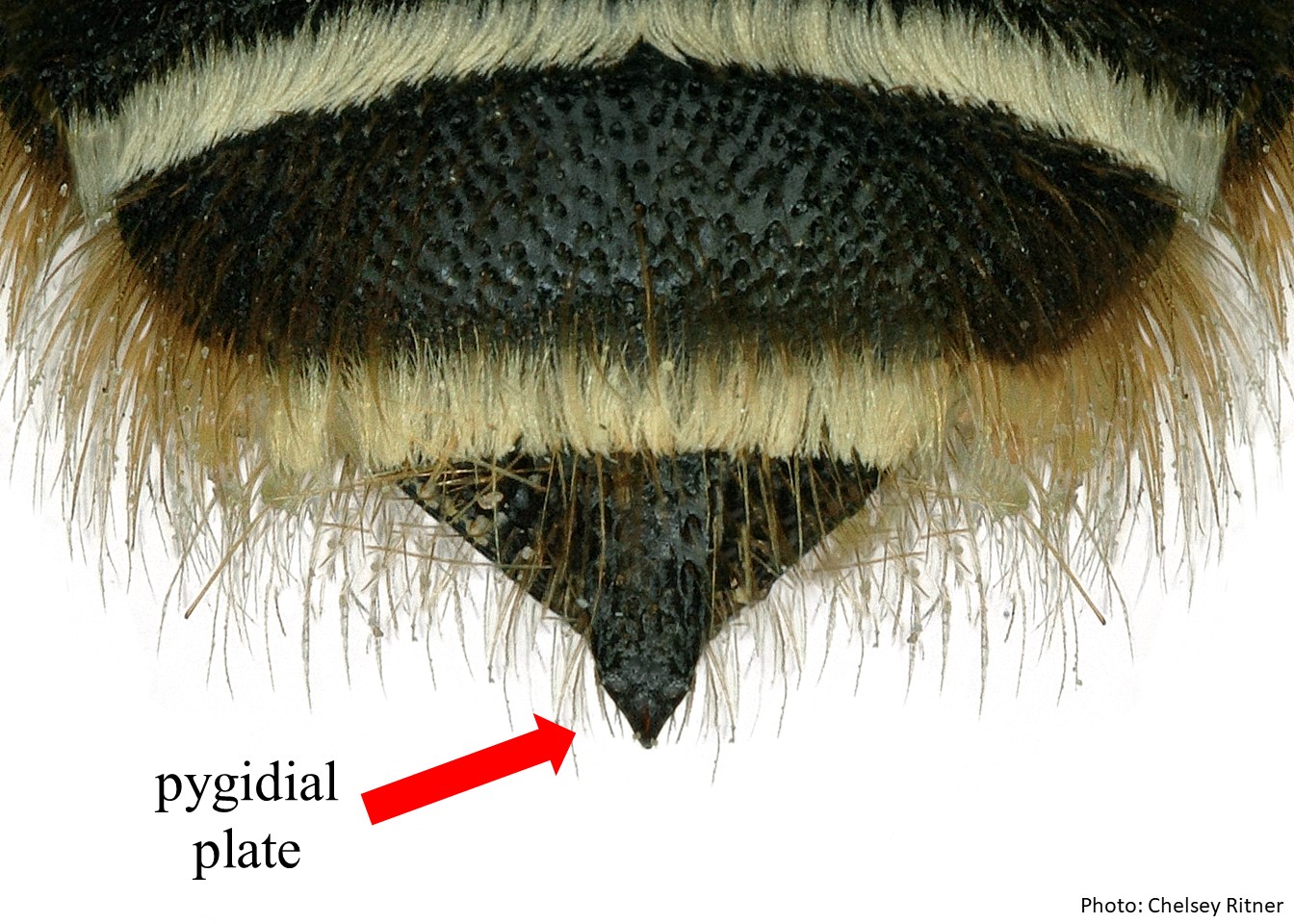Family: Apidae
Subfamily: Xylocopinae
Tribe: Xylocopini
Genus: Xylocopa
Subgenus: Nodula, Maa 1938
Common name: Carpenter bee
Xylocopa (Nodula) are slender, small to medium sized bees, 10 – 20 mm in length, that have black integumentintegument:
a tough, protective outer layer
with very faint metallic reflections in bright light. They have a short, primarily black, pubescencepubescence:
short, fine hair
but often have at least some pale hair on the head and thorax. The wings are a medium brown and are moderately iridescent (Hurd and Moure 1963Hurd and Moure 1963:
Hurd, P.D. and J.S. Moure. 1963. A Classification of the Large Carpenter Bees (Xylocopine) (Hymenoptera: Apoidea). University of California Publications in Entomology (Vol. 29). Berkeley and Los Angeles: University of California Press, 365 pp.).
Xylocopa (Nodula) contains 7 species (Hurd and Moure 1963Hurd and Moure 1963:
Hurd, P.D. and J.S. Moure. 1963. A Classification of the Large Carpenter Bees (Xylocopine) (Hymenoptera: Apoidea). University of California Publications in Entomology (Vol. 29). Berkeley and Los Angeles: University of California Press, 365 pp.; Minckley 1998Minckley 1998:
Minckley, R. L. 1998. A Cladistic Analysis and Classification of the Subgenera and Genera of the Large Carpenter Bees, Tribe Xylocopini (Hymenoptera: Apidae). Natural History Museum, The University of Kansas 9: 1-47.).
Xylocopa (Nodula) are known from India (Ascher and Pickering 2022Ascher and Pickering 2022:
Ascher, J.S. and J. Pickering. 2022. Discover Life bee species guide and world checklist (Hymenoptera: Apoidea: Anthophila). https://www.discoverlife.org/mp/20p?see=Nodulaamp;name=Xylocopaamp;flags=subgenus:).

Distribution map generated by Discover Life -- click on map for details, credits, and terms of use.
The pollination habits of Xylocopa (Nodula) have not been recorded but most members of the genus Xylocopa are generalist pollinators.
(modified from Hurd and Moure 1963Hurd and Moure 1963:
Hurd, P.D. and J.S. Moure. 1963. A Classification of the Large Carpenter Bees (Xylocopine) (Hymenoptera: Apoidea). University of California Publications in Entomology (Vol. 29). Berkeley and Los Angeles: University of California Press, 365 pp. and Minckley 1998Minckley 1998:
Minckley, R. L. 1998. A Cladistic Analysis and Classification of the Subgenera and Genera of the Large Carpenter Bees, Tribe Xylocopini (Hymenoptera: Apidae). Natural History Museum, The University of Kansas 9: 1-47.)
 short.
short. narrow, nearly parallel-sided, and with subapicalsubapical:
narrow, nearly parallel-sided, and with subapicalsubapical:Xylocopa (Nodula) is most similar to X. (Maaiana), which was previously included under X. (Nodula). They can distinguished by the shape of the scutellumscutellum:
shield shaped plate behind scutum, which is more evenly rounded, not narrowly rounded or subangulatesubangulate:
Almost angulate; having a suggestion of corners or angles
in profile as it is in X. (Maaiana). Male X. (Nodula) can also be distinguished by the presence of a propodealpropodeal:
the last segment of the thorax
triangle (Minckley 1998Minckley 1998:
Minckley, R. L. 1998. A Cladistic Analysis and Classification of the Subgenera and Genera of the Large Carpenter Bees, Tribe Xylocopini (Hymenoptera: Apidae). Natural History Museum, The University of Kansas 9: 1-47.).
Xylocopa (Nodula) is known to nest in dry rhododendron branches (Hurd and Moure 1963Hurd and Moure 1963:
Hurd, P.D. and J.S. Moure. 1963. A Classification of the Large Carpenter Bees (Xylocopine) (Hymenoptera: Apoidea). University of California Publications in Entomology (Vol. 29). Berkeley and Los Angeles: University of California Press, 365 pp.; Batra 1977Batra 1977:
Batra, S.W.T. 1977. Bees of India (Apoidea), their Behaviour, Management and a Key to the Genera. Oriental Insects 11(3): 289-324.).
There are no known invasives.
Ascher, J.S. and J. Pickering. 2022. Discover Life bee species guide and world checklist (Hymenoptera: Apoidea: Anthophila). https://www.discoverlife.org/mp/20p?see=Nodula&name=Xylocopa&flags=subgenus:
Batra, S.W.T. 1977. Bees of India (Apoidea), their Behaviour, Management and a Key to the Genera. Oriental Insects 11(3): 289-324.
Hurd, P.D. and J.S. Moure. 1963. A Classification of the Large Carpenter Bees (Xylocopine) (Hymenoptera: Apoidea). University of California Publications in Entomology (Vol. 29). Berkeley and Los Angeles: University of California Press, 365 pp.
Keasar, T. 2010. Large Carpenter Bees as Agricultural Pollinators. Psyche doi:10.1155/2010/927463.
Michener, C.D. 2007. The Bees of the World (2nd ed.). Johns Hopkins University Press, Baltimore and London, 953 pp.
Minckley, R.L. 1998. A Cladistic Analysis and Classification of the Subgenera and Genera of the Large Carpenter Bees, Tribe Xylocopini (Hymenoptera: Apidae). Natural History Museum, The University of Kansas 9: 1-47.